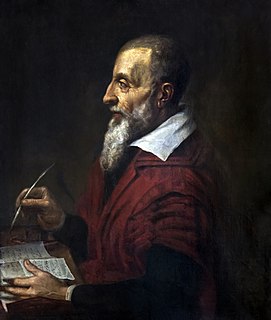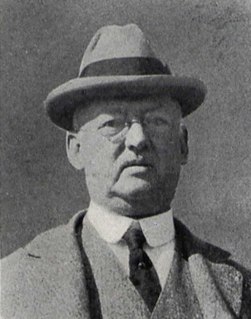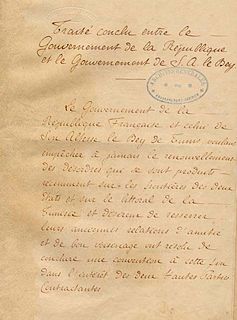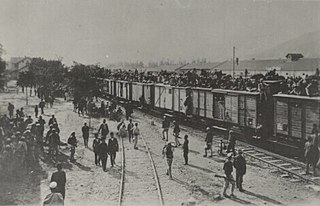
Chronology is the science of arranging events in their order of occurrence in time. Consider, for example, the use of a timeline or sequence of events. It is also "the determination of the actual temporal sequence of past events".

The Treaty of Stralsund ended the war between the Hanseatic League and the kingdom of Denmark. The Hanseatic League reached the peak of its power by the conditions of this treaty.

Roger Tory Peterson was an American naturalist, ornithologist, illustrator and educator, and one of the founding inspirations for the 20th-century environmental movement.
A universal history is a work aiming at the presentation of a history of all of mankind as a whole, coherent unit. A universal chronicle or world chronicle typically traces history from the beginning of written information about the past up to the present. Therefore, any work classed as such purportedly attempts to embrace the events of all times and nations in so far as scientific treatment of them is possible.
Karl Julius Ploetz was a German author of scholarly works, most notably his Epitome of History published in the English language in 1883.

Edward Perkins Channing was an American historian and an author of a monumental History of the United States in six volumes, for which he won the 1926 Pulitzer Prize for History. His thorough research in printed sources and judicious judgments made the book a standard reference for scholars for decades. Channing taught at Harvard 1883–1929 and trained many PhD's who became professors at major universities.

William Leonard Langer was an American historian, intelligence analyst and policy advisor. He served as chairman of the history department at Harvard University. He was on leave during World War II as head of the Research and Analysis Branch of the Office of Strategic Services. He was a specialist on the diplomacy of the periods 1840–1900 and World War II. He edited many books, including a series on European history, a large-scale reference book, and a university textbook.

The Treaty of Bardo or Treaty of Qsar es-S'id, Treaty of Ksar Said established a French protectorate over Tunisia that lasted until World War II. It was signed on 12 May 1881 between representatives of the French Republic and the Tunisian bey Muhammed as-Sadiq, placing Tunisia under the control of the French Resident-General.
Tolkien's legendarium is the body of J. R. R. Tolkien's mythopoeic writing, unpublished in his lifetime, that forms the background to his The Lord of the Rings, and which his son Christopher summarized in his compilation of The Silmarillion and documented in his 12-volume series The History of Middle-earth. The legendarium's origins reach back to 1914, when Tolkien began writing poems and story sketches, drawing maps, and inventing languages and names as a private project to create a unique English mythology. The earliest story drafts are from 1916; he revised and rewrote these for most of his adult life.
Douglas Allen Anderson is an American writer and editor on the subjects of fantasy and medieval literature, specializing in textual analysis of the works of J. R. R. Tolkien. He is a winner of the Mythopoeic Award for scholarship.

Abbas Helmy I of Egypt was the Wāli of Egypt and Sudan. He was a son of the Albanian Tusun Pasha, and a grandson of the Albanian Muhammad Ali, founder of the reigning Muhammad Ali Dynasty of Egypt and Sudan. The Chambers Biographical Dictionary says of him: "[b]igoted and sensual, he did much to undo the progress made under Muhammad Ali."

The Battle of Alcântara took place on 25 August 1580, near the brook of Alcântara, in the vicinity of Lisbon, Portugal, and was a victory of the Habsburg King Philip II over the other pretender to the Portuguese throne, Dom António, Prior of Crato.

The Treaty or Peace of Saint-Germain-en-Laye of 19 June (OS) or 29 June (NS) 1679 was a peace treaty between France and the Electorate of Brandenburg. It restored to France's ally Sweden her dominions Bremen-Verden and Swedish Pomerania, lost to Brandenburg in the Scanian War. Sweden ratified the treaty on 28 July 1679.

Krastyo Kotev Krastev, popularly known as Dr. Krastev, was a Bulgarian writer, translator, philosopher and public figure most notable as Bulgaria's first professional literary critic. Krastev was an influential member of the modernist Misal ("Thought") circle, a leading collaboration of writers that aimed to revolutionize Bulgarian literature and introduce the modern ideas of European literature and philosophy to the country.

The March of Shkup is an Albanian folk song composed in 1912, when Albanian revolutionaries captured the city of Skopje from the Ottomans after more than 500 years of Ottoman rule.
In archaeology, Fauresmith industry is a stone tool industry that is transitional between the Acheulian and the Middle Stone Age. It is at the end of the Acheulian or beginning of the Middle Stone Age. It is named after the town of Fauresmith in South Africa. The Fauresmith is found at a number of other archaeological sites such as Wonderwerk Cave and Kathu Pan where it is potentially dated to at least 420,000 years ago. The Fauresmith consists of Middle Stone Age technology such as blades, points and prepared core technology as well as retaining handaxes from the Acheulian. The type sites are Brakfontein 321 and Riverview Estates Site VI. The Fauresmith culture shows Levalloisean influence, with hand-axes and flakes with faceted striking platforms. It is largely in the similar period with the Sangoan industry.

The Jhukar Phase, was a phase of the Late Harappan culture in Sindh that continued after the decline of the mature Indus Valley civilisation in the 2nd millennium BC. It is named after the archaeological type site called Jhukar in Sindh. It was, in turn, followed by the Jhangar Phase.
The Jhangar Phase was an archaeological culture, named after the type site Jhangar, that followed the Jhukar Phase of the Late Harappan culture in Sindh.

J. R. R. Tolkien's maps, depicting his fictional Middle-earth and other places in his legendarium, helped him with plot development, guides the reader through his often complex stories, and contributes to the impression of depth in his writings.













